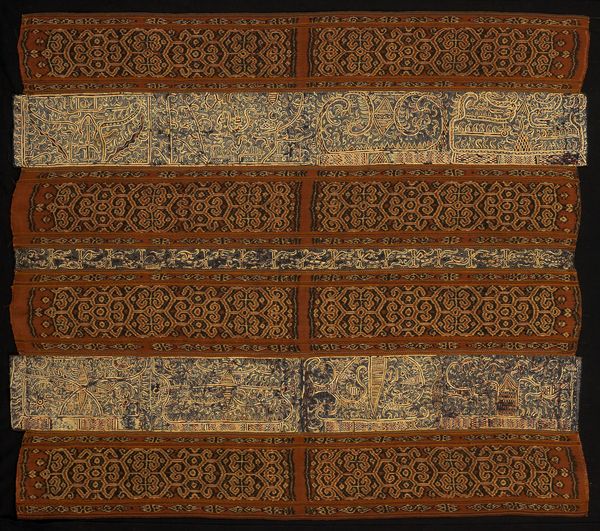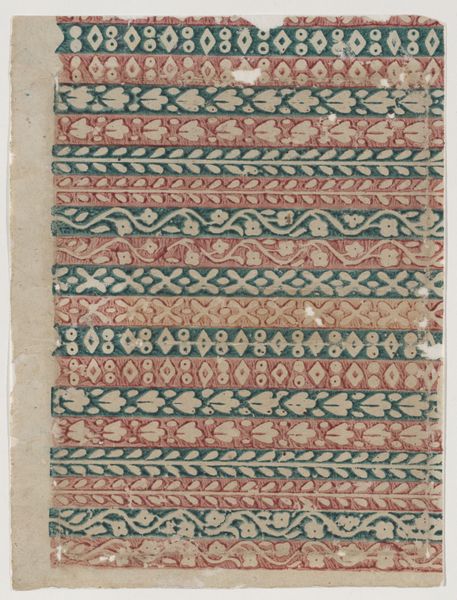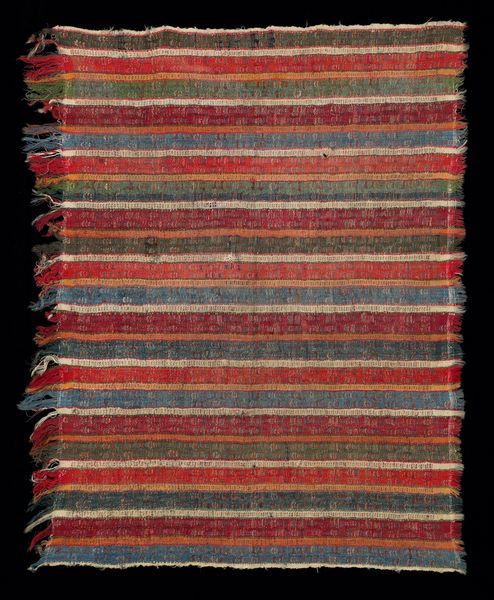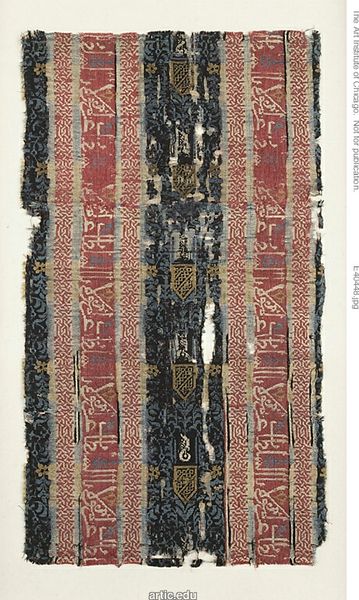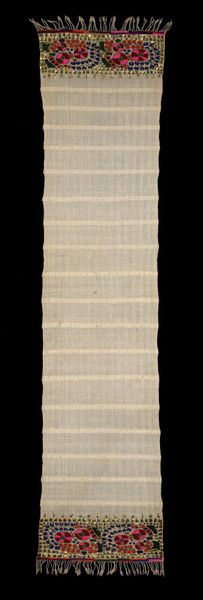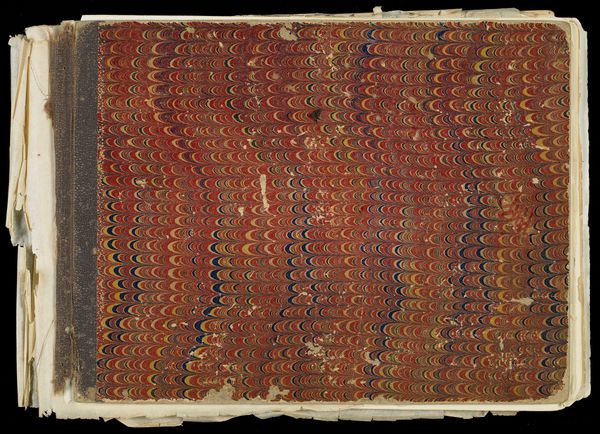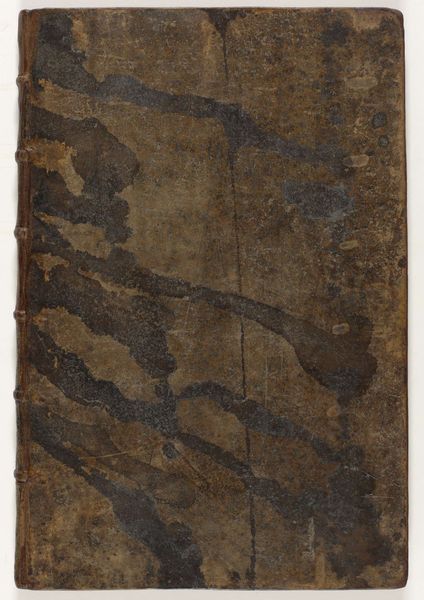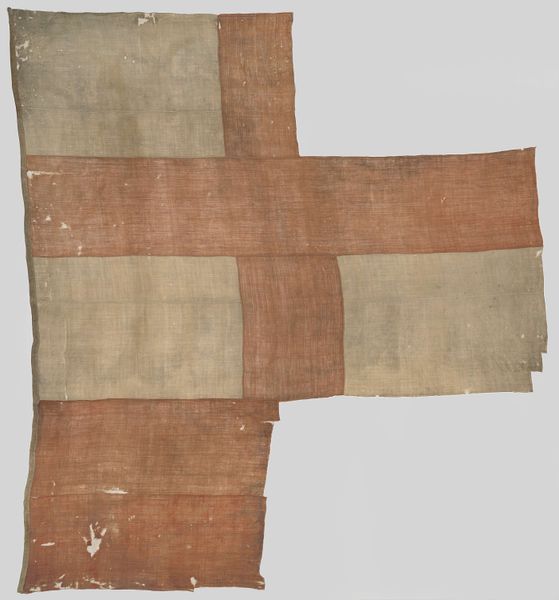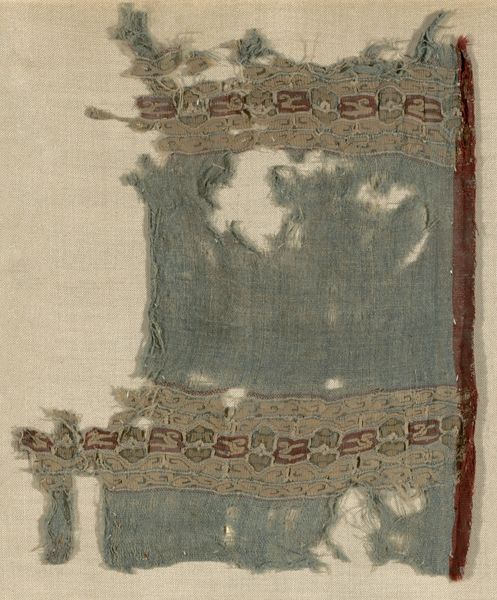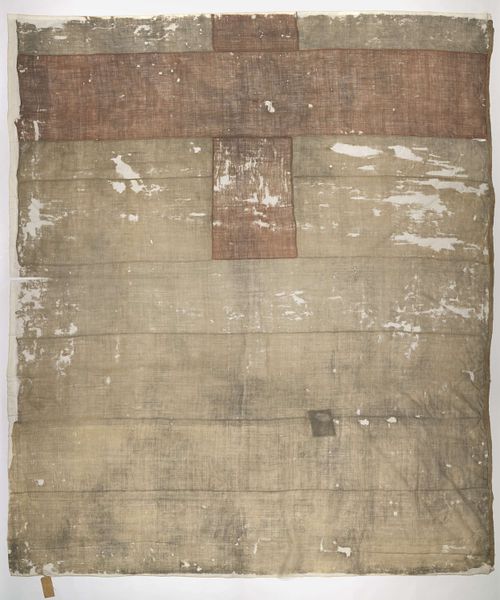
Probably a Fragment from a Garment of Don Felipe 1275 - 1300
0:00
0:00
weaving, textile
#
medieval
#
weaving
#
textile
#
geometric
#
islamic-art
#
mixed media
Dimensions: 31.8 × 29.8 cm (12 1/2 × 11 3/4 in.) Repeat: 8.8 × 2.3 cm (3 1/2 × 7/8 in.)
Copyright: Public Domain
Curator: Here we have “Probably a Fragment from a Garment of Don Felipe,” a weaving fragment dating back to between 1275 and 1300, housed here at the Art Institute of Chicago. It presents a striking pattern of horizontal bands in dark blues, reds, and gold. Editor: My first impression is of something ancient and noble, but also worn, bearing the weight of history. There's a regal quality to those colors, despite the visible decay. Curator: Precisely. The textile, while damaged, displays remarkable detail. Note the Kufic script incorporated into the red bands. It speaks to a complex interplay between geometric and calligraphic design elements. Editor: The use of Kufic script in what’s labeled as possibly belonging to Don Felipe opens up a fascinating dialogue about cross-cultural exchange during the medieval period. It underscores the fluidity of identity and artistic influence in that era. What statements were they making, mixing Islamic text into garments made for presumably Christian elites? Curator: Its function, specifically within a garment of a figure like Don Felipe, requires deeper inquiry into patronage and its symbolism. Editor: And perhaps beyond simple power and influence, consider what faith these royals had, or were open to, at a time where faith was such a huge issue across cultures. Curator: Absolutely, a very potent thought experiment indeed. Considering the construction through weaving, one sees a rigorous and deliberate composition despite the organic nature of its material makeup. It offers great contrast against the grid pattern, almost resembling little diamonds in various rows and colors. Editor: It urges us to reevaluate established narratives. Beyond questions of faith, even things like textile production held cultural significance, hinting at hidden socio-political power structures. It's not merely a decorative fragment; it's a microcosm of societal complexity. Curator: Looking closely at its woven texture provides great information to that sociopolitical dialogue. In short, one would gain new awareness about the role this cloth once played, and how it came to be displayed today.
Comments
No comments
Be the first to comment and join the conversation on the ultimate creative platform.
